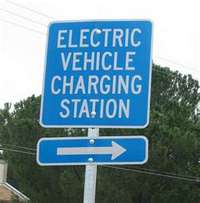Electric Vehicles: Lessons of Success and Failure
 |
Electric Vehicles: Lessons of Success and Failure, IDTechEx, Cambridge, UK, January 11, 2013: Electric Vehicles: Lessons of Success and Failure By Dr Peter Harrop, Chairman, IDTechEx
You do not look at penguins to judge how the world's birds are prospering. You should not look at on-road electric cars to assess how electric vehicles in general are progressing. Both are somewhat special cases. Electric cars are neither small enough to be lower cost than conventional ones nor are they big enough to be bought by governments and companies seeking performance or low cost-over-life before up-front price. They are at a very awkward place in the middle.
If we look at the big picture, the age of the hybrid electric vehicle is sturdily progressing with versions for agriculture, outdoor material handling -from forklifts to earthmoving - and ocean sailing being newly commercialised. They offer many benefits, including performance and cost-over-life and reduced maintenance, down time, noise and pollution. Some are parallel hybrids and, in other cases such as some buses, series hybrids are viable, these progressing to be range extended electric vehicles with range extender varying from a Wankel engine in a hybrid aircraft flown in Germany to fuel cells in buses, forklifts and trucks, usually experimentally, and stripped down piston engines in most commercial hybrids on the open road. Innovation is rapid beyond cars, with the MAN urban buses and trash collecting trucks using supercapacitor banks instead of lithium-ion batteries and sometimes all-electric mode when silence is needed. Off-road, we have seen the Toyota hybrid Formula One racer using supercapacitors in place of lithium-ion batteries.
The big picture with pure electric vehicles now embraces many small commercial aircraft, indoor forklifts, mobility vehicles for the disabled, e-bikes and scooters, surface boats and Autonomous Underwater Vehicles UAVs to name just a few and in most cases there are now lithium-ion batteries fully adopted in place of lead acid batteries or made available as an option. The Guinness Book of Records has two new entries - the recent flight of the world's first pure electric helicopter by a Frenchman and the first pure electric multicopter by a German both scaling up what happened with toys not scaling down what happened in the military - lessons there.
So what of cars? The pure electric car continues to be a failure, with sales little more than one quarter of those of pure electric golf cars and less than one tenth of those for pure electric forklifts. Attempts will continue, with the niche products such as the expensive Tesla Model S more likely to succeed than versions competing with affordable family cars. Hybrid cars are a success for Toyota, with the Prius possibly in profit now at around the million mark in yearly sales. For others, we are at last seeing some innovation with the Ford Fusion to be available as conventional, hybrid and pure electric options. Its overhead lighting/ control cluster is deeply significant because it uses, for the first time in a volume-produced vehicle, printed and laminar electronics and electrics in a structural moulding. This technology can save up to 40% in cost, volume and weight and it probably increases reliability by a factor of ten. It will now be applied to all vehicle wiring, the dashboard instruments and controls and even major components such as supercapacitors and traction batteries. This will then garner significant gains in range and cost of electric vehicles will result. A new hybrid technology will appear in 2013 that involves lead carbon batteries - some technically supercabatteries, combining supercapacitor and lead-acid technology. Switched reluctance motors are starting to be offered by more manufacturers seeking lower costs and better reliability provided very high speeds are not needed. Many other advances are coming thick and fast for many types of electric vehicle, including silicon carbide power components to give greater temperature tolerance and higher frequency and energy harvesting shock absorbers on the larger vehicles. Expect most of them to first appear on vehicles other than cars.
The only event giving balanced coverage of all electric vehicles and these new key enabling technologies is the forthcoming "Electric Vehicles Land, Sea, Air" co-located with "Printed Electronics Europe" and "Energy Harvesting Europe" in Berlin, for full details on the event, visit ID TechEx ev Europe .


